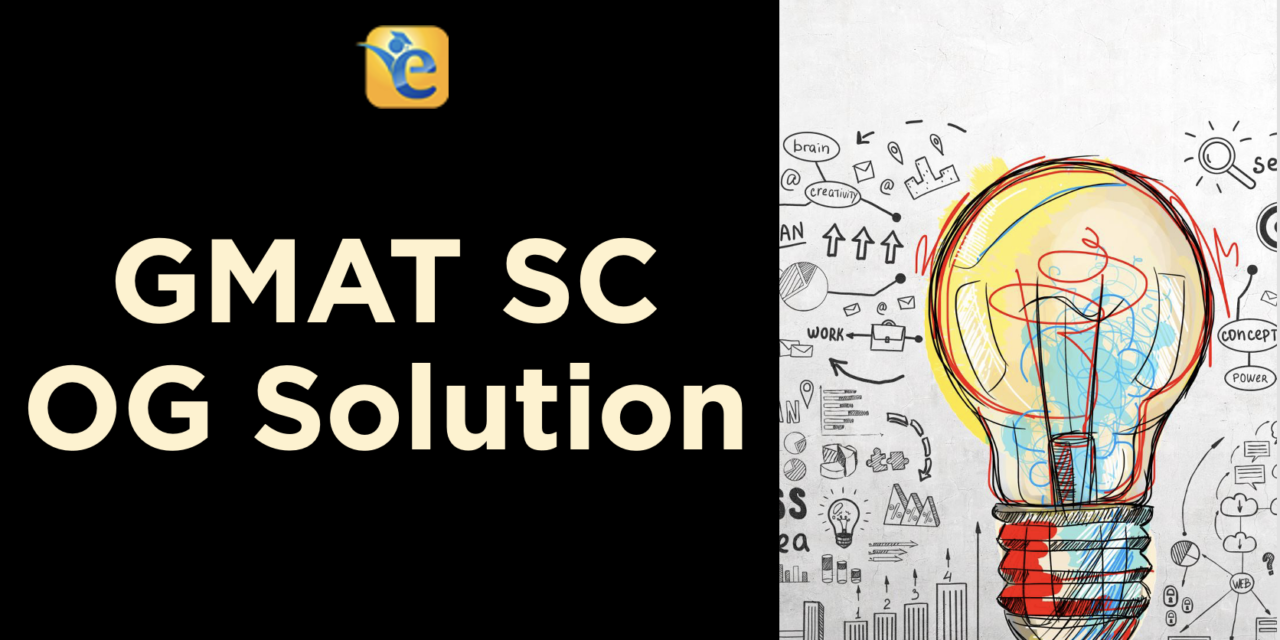What does this question test?
This question tests your skill in identifying the subject of the sentence. This sentence also presents a list and ensures that you make the list parallel. In addition, it tests your knowledge of modifiers, relative pronoun modifiers modify preceding noun and verb-ing modifiers separated by comma modify preceding clause.
What does this sentence mean?
This sentence presents a discovery – discovery of 1 million year old skull – in Afar region. It states that this skull has traits associated with Homo Erectus and Homo sapiens. This discovery indicates that modern humans developed much earlier than previously thought.
What are the errors in the original sentence?
A one million-year-old skull bearing traits associated both with Homo erectus and, in addition, Homo sapiens has been found in the Afar region of Eritrea, and indicates that modern humans developed much earlier than previously thought.This sentence has 3 errors.
Parallelism Error: This sentence contains a list as indicated by the marker phrase ‘both..and’. Here is the list:
- Both with Homoerectus
- And, in addition, Homo Sapiens
This list is clearly not parallel. Notice that “with” appears after “both” and hence should appear after “and” as well.
Idiom Error: The correct idiom usage is “both..and”. “In addition” is not needed.
Punctuation Error: The list of two verbs – has been found & indicates – is connected using comma + and. This is incorrect. It should have been connected using “and” only since comma + and is used to connect two independent clauses or a list with more than 2 elements.
Loved the solution? Take a free trial to get unlimited access to concept files, live sessions, and practice questions. For any strategic advice for GMAT or MBA Admissions, write to us at acethegmat@e-gmat.com. We are the most reviewed GMAT prep company on GMATClub with more than 2400+ reviews
Answer Choice Analysis
Choice B: A one million-year-old skull bearing traits associated both with Homo erectus and Homo sapiens have been found in the Afar region of Eritrea, which indicates that modern humans developed much earlier than previously thought.Parallelism Error: Similar to Choice A.
SV-Agreement Error: The subject of the sentence is “skull”. This has been modified by the modifier – bearing traits. Traits is further modified by the verb-ed modifier – associated with… The verb for this subject is “have been found”. Thus singular subject does not agree with plural verb.
Modifier Error: “which modifier” modifies the closest noun. In this case, it appears to modify Afar region of Eritea. But this is illogical since the region does not indicate the stated fact. Furthermore, we should use “where” to modify the place.
Choice C: A one million-year-old skull bearing traits associated with both Homo erectus and Homo sapiens has been found in the Afar region of Eritrea, indicating that modern humans developed much earlier than previously thought.No errors. The verb-ing modifier modifies the preceding clause correctly.
Choice D: A one million-year-old skull bearing traits associated with both Homo erectus and Homo sapiens and found in the Afar region of Eritrea, indicating that modern humans developed much earlier than previously thought.Fragment Error: The subject “skull” has no verb. Notice that both verb-like words that are in the form of verb-ed are indeed modifiers – associated & found. Similarly the verb-like words that are in the form of verb-ing are also modifiers.
Choice E: A one million-year-old skull bearing traits associated with both Homo erectus and Homo sapiens have been found in the Afar region of Eritrea, which indicates that modern humans developed much earlier than previously thought.SV- Agreement Error: Similar to Choice B
Modifier Error: Similar to Choice B
Thus, Choice C is the correct answer.
What are the key take-away messages?
- Identify all SV pairs in the sentence.
- Look for markers such as “both..and”. These markers indicate presence of list. The list should be grammatically and logically parallel.
- SV pairs should agree in number.
Where can you find more information?
Register at e-gmat to access Sentence Correction free trial.
Loved the solution? Take a free trial to get unlimited access to concept files, live sessions, and practice questions. For any strategic advice for GMAT or MBA Admissions, write to us at acethegmat@e-gmat.com. We are the most reviewed GMAT prep company on GMATClub with more than 2400+ reviews











